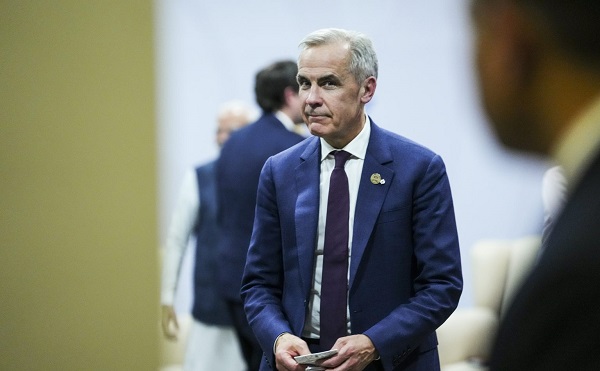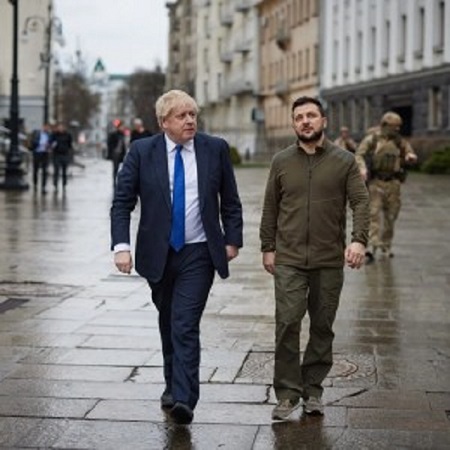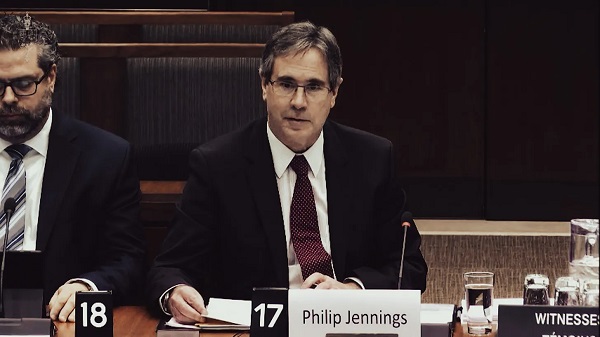International
Afghan Ex–CIA Partner Accused in D.C. National Guard Ambush

In what FBI Director Kash Patel called a “heinous act of terrorism,” senior U.S. officials say they have opened a “coast-to-coast” investigation into the gunman who opened fire on two National Guard members just blocks from the White House — an Afghan man who had worked with a Central Intelligence Agency–backed paramilitary unit during the war in Afghanistan and later resettled in the United States under a Biden-era evacuation program. The case is likely to further energize the Trump administration’s already robust deportation drive and its expanded checks on immigration.
The suspect, identified as 29-year-old Rahmanullah Lakanwal, allegedly ambushed two members of the West Virginia National Guard outside the Farragut West Metro station around 2:15 p.m. Wednesday, in a busy commercial district a short walk from the presidential compound. Both soldiers remain in critical condition after emergency surgery, and the gunman was also wounded before being taken into custody, officials say.
Patel said his teams are investigating the attack as a “heinous act of terrorism,” which other officials have suggested could involve international terrorist networks, though they say the assailant appears to have acted alone.
CIA Director John Ratcliffe said Thursday that Lakanwal had previously worked alongside U.S. forces in Afghanistan. “He previously worked with the U.S. government, including CIA, as a member of a partner force in Kandahar,” Ratcliffe said, describing a unit that operated with American support until the collapse of the U.S.-backed Afghan government in 2021.
According to the Department of Homeland Security and multiple law-enforcement officials cited in U.S. media reports, Lakanwal entered the United States in September 2021 under Operation Allies Welcome, the Biden administration program that airlifted tens of thousands of Afghans who had worked with U.S. forces and feared Taliban reprisals. He later applied for asylum and was granted it after President Donald Trump returned to office. Officials say he had no known criminal history and had most recently been living in Washington State, where a relative told NBC News he was working for Amazon.
NBC, citing a family member, also reported that Lakanwal served for roughly a decade in the Afghan army, including deployments in Kandahar alongside U.S. Special Forces. Those details cut to the heart of a politically explosive question in Washington — whether a man once trusted enough to fight alongside U.S. paramilitary personnel slipped through vetting as the Afghan war ended, or whether a former ally became radicalized after he arrived in America.
Officials say Wednesday’s attack unfolded in seconds. Two West Virginia Guard soldiers, part of a domestic security deployment ordered by Trump earlier this year, were on a “high-visibility patrol” near the entrance to Farragut West when a man rounded a corner, produced a handgun and opened fire without warning.
According to detailed accounts from federal officials and witnesses, the first victim — identified by U.S. Attorney Jeanine Pirro as Sarah Beckstrom — was struck almost instantly and collapsed to the pavement. Pirro told reporters the alleged assassin was armed with a .357-caliber revolver and said that after shooting one of the victims, he “leaned over and shot him again.”
After exhausting his ammunition, the gunman allegedly grabbed the fallen soldier’s weapon and continued firing, wounding a second Guard member — Andrew Wolfe — before other troops and officers subdued him in a brief but chaotic struggle that involved both gunfire and a knife.
Reacting sharply to a reporter’s question about whether the Trump administration should have deployed National Guard units to city streets, Pirro replied that the Guard is necessary, adding that their presence “saved lives.” As officials left the news conference, Pirro brushed off a final question about whether the suspect was part of a radicalized Islamist network, saying only: “We won’t go there.”
Yesterday the Secret Service briefly locked down the White House as sirens converged on one of downtown Washington’s busiest commuter arteries. Witnesses told reporters they heard a short burst of shots followed by more sustained firing, then watched people flee into side streets and cafes as emergency vehicles arrived.
The FBI’s Joint Terrorism Task Force is leading the investigation. Law-enforcement officials say they are examining Lakanwal’s digital footprint, communications and travel history, and working with intelligence agencies to retrace his time in Afghanistan and the United States. Patel said FBI teams had conducted searches overnight on numerous electronic devices found at properties associated with the suspect — including in San Diego and in Washington State.
“You miss all the signs (of danger) when you do zero vetting,” Patel told reporters when asked if the Biden administration had erred in admitting the suspect.
In a televised address from his Mar-a-Lago resort late Wednesday, President Trump framed the attack as proof that his immigration hard line is justified. Calling the shooting “a heinous assault” and “an act of evil, an act of hatred, an act of terror,” Trump said the United States “will not put up with these kinds of assaults on law and order by people who shouldn’t even be in our country.”
He pledged to “re-examine every single alien who has entered our country from Afghanistan under Biden” and vowed that “the animal who perpetrated this atrocity” would pay “the steepest possible price.” Shortly afterward, U.S. Citizenship and Immigration Services announced that it has halted processing of all immigration requests relating to Afghan nationals — including asylum applications, permanent-residency cases and new entries — “pending further review of security and vetting protocols.”
According to an internal USCIS memo previously obtained by CBS News, the Trump administration had already directed immigration officials to review the cases of all refugees admitted during the Biden years, a cohort of roughly 233,000 people from multiple countries. Now, Afghans are facing an explicit freeze, with no end date. Meanwhile, Vice President J.D. Vance amplified the hard-line message, writing on X that the shooting proved critics of Biden’s Afghan-refugee policy wrong and declaring: “We must redouble our efforts to deport people with no right to be in our country.”
The Bureau is a reader-supported publication.
To receive new posts and support my work, consider becoming a free or paid subscriber.
Artificial Intelligence
Trump’s New AI Focused ‘Manhattan Project’ Adds Pressure To Grid


From the Daily Caller News Foundation
Will America’s electricity grid make it through the impending winter of 2025-26 without suffering major blackouts? It’s a legitimate question to ask given the dearth of adequate dispatchable baseload that now exists on a majority of the major regional grids according to a new report from the North American Electric Reliability Corporation (NERC).
In its report, NERC expresses particular concern for the Texas grid operated by the Electric Reliability Council of Texas (ERCOT), where a rapid buildout of new, energy hogging AI datacenters and major industrial users is creating a rapid increase in electricity demand. “Strong load growth from new data centers and other large industrial end users is driving higher winter electricity demand forecasts and contributing to continued risk of supply shortfalls,” NERC notes.
Texas, remember, lost 300 souls in February 2021 when Winter Storm Uri put the state in a deep freeze for a week. The freezing temperatures combined with snowy and icy conditions first caused the state’s wind and solar fleets to fail. When ERCOT implemented rolling blackouts, they denied electricity to some of the state’s natural gas transmission infrastructure, causing it to freeze up, which in turn caused a significant percentage of natural gas power plants to fall offline. Because the state had already shut down so much of its once formidable fleet of coal-fired plants and hasn’t opened a new nuclear plant since the mid-1980s, a disastrous major blackout that lingered for days resulted.
Dear Readers:
As a nonprofit, we are dependent on the generosity of our readers.
Please consider making a small donation of any amount here.
Thank you!
This country’s power generation sector can either get serious about building out the needed new thermal capacity or disaster will inevitably result again, because demand isn’t going to stop rising anytime soon. In fact, the already rapid expansion of the AI datacenter industry is certain to accelerate in the wake of President Trump’s approval on Monday of the Genesis Mission, a plan to create another Manhattan Project-style partnership between the government and private industry focused on AI.
It’s an incredibly complex vision, but what the Genesis Mission boils down to is an effort to build an “integrated AI platform” consisting of all federal scientific datasets to which selected AI development projects will be provided access. The concept is to build what amounts to a national brain to help accelerate U.S. AI development and enable America to remain ahead of China in the global AI arm’s race.
So, every dataset that is currently siloed within DOE, NASA, NSF, Census Bureau, NIH, USDA, FDA, etc. will be melded into a single dataset to try to produce a sort of quantum leap in AI development. Put simply, most AI tools currently exist in a phase of their development in which they function as little more than accelerated, advanced search tools – basically, they’re in the fourth grade of their education path on the way to obtaining their doctorate’s degree. This is an effort to invoke a quantum leap among those selected tools, enabling them to figuratively skip eight grades and become college freshmen.
Here’s how the order signed Monday by President Trump puts it: “The Genesis Mission will dramatically accelerate scientific discovery, strengthen national security, secure energy dominance, enhance workforce productivity, and multiply the return on taxpayer investment into research and development, thereby furthering America’s technological dominance and global strategic leadership.”
It’s an ambitious goal that attempts to exploit some of the same central planning techniques China is able to use to its own advantage.
But here’s the thing: Every element envisioned in the Genesis Mission will require more electricity: Much more, in fact. It’s a brave new world that will place a huge amount of added pressure on power generation companies and grid managers like ERCOT. Americans must hope and pray they’re up to the task. Their track records in this century do not inspire confidence.
David Blackmon is an energy writer and consultant based in Texas. He spent 40 years in the oil and gas business, where he specialized in public policy and communications.
International
Trump orders 500 more troops to reinforce D.C. after Guard shooting

President Trump moved swiftly Wednesday to reinforce security in the nation’s capital, ordering an additional 500 National Guard troops into Washington after two Guardsmen were shot just blocks from the White House. Secretary of War Pete Hegseth announced the request during a press briefing, describing the attack as a direct strike on the men and women protecting the city. “We will never back down. We will secure our capital. We will secure our cities,” Hegseth said Wednesday, adding that the president directed him to coordinate with the Army and the Guard to surge fresh forces into D.C. He framed the move as part of Trump’s broader campaign to restore order: “The drop in crime has been historic. The increase in safety and security has been historic.”
Authorities say the two Guardsmen — both members of West Virginia’s National Guard, confirmed by Gov. Patrick Morrisey — were armed and on routine high-visibility patrols when a gunman rounded a corner at 17th and I Street NW around 2:15 p.m. and opened fire. D.C. Mayor Muriel Bowser described it as a “targeted shooting,” and Metro Police executive assistant chief Jeff Carroll detailed the moment the attacker “raised his arm with a firearm and discharged it at the National Guard members.” The soldiers were rushed to a hospital in critical condition. Law enforcement from MPD, the FBI, ATF, and the Secret Service immediately flooded the scene. One suspect was detained; officials say there is no evidence of additional attackers, but the motive remains unknown.
The president first deployed the Guard to D.C. on Aug. 11 as part of a sweeping law-and-order push to cut crime and clean up the city, a mission launched after former DOGE employee Edward Coristine — known widely as “Big Balls” — was beaten while thwarting a carjacking. Coristine, now at the Social Security Administration, became something of a symbol inside the administration of the city’s lawlessness.
Wednesday’s shooting comes as Trump’s security initiative faces legal headwinds. Although the Guard is conducting patrols, they are not authorized to make arrests under the Posse Comitatus Act, limiting their role to deterrence and support. D.C. officials sued the administration in September, arguing the deployment is unlawful without the mayor’s consent. A federal judge temporarily sided with the city last week, ordering Trump to withdraw the Guard — but had delayed the mandate until Dec. 11 to allow time for an appeal.
-

 Business1 day ago
Business1 day agoFederal major projects list raises questions
-

 International2 days ago
International2 days agoBoris Johnson Urges Ukraine to Continue War
-

 Great Reset2 days ago
Great Reset2 days agoRCMP veterans’ group promotes euthanasia presentation to members
-

 Health2 days ago
Health2 days agoOrgan donation industry’s redefinitions of death threaten living people
-

 MAiD2 days ago
MAiD2 days agoHealth Canada suggests MAiD expansion by pre-approving ‘advance requests’
-

 Business1 day ago
Business1 day agoBlacked-Out Democracy: The Stellantis Deal Ottawa Won’t Show Its Own MPs
-

 International2 days ago
International2 days agoTrump closes in on peace in Ukraine
-

 Daily Caller2 days ago
Daily Caller2 days agoEXCLUSIVE: Here’s An Inside Look At The UN’s Disastrous Climate Conference











